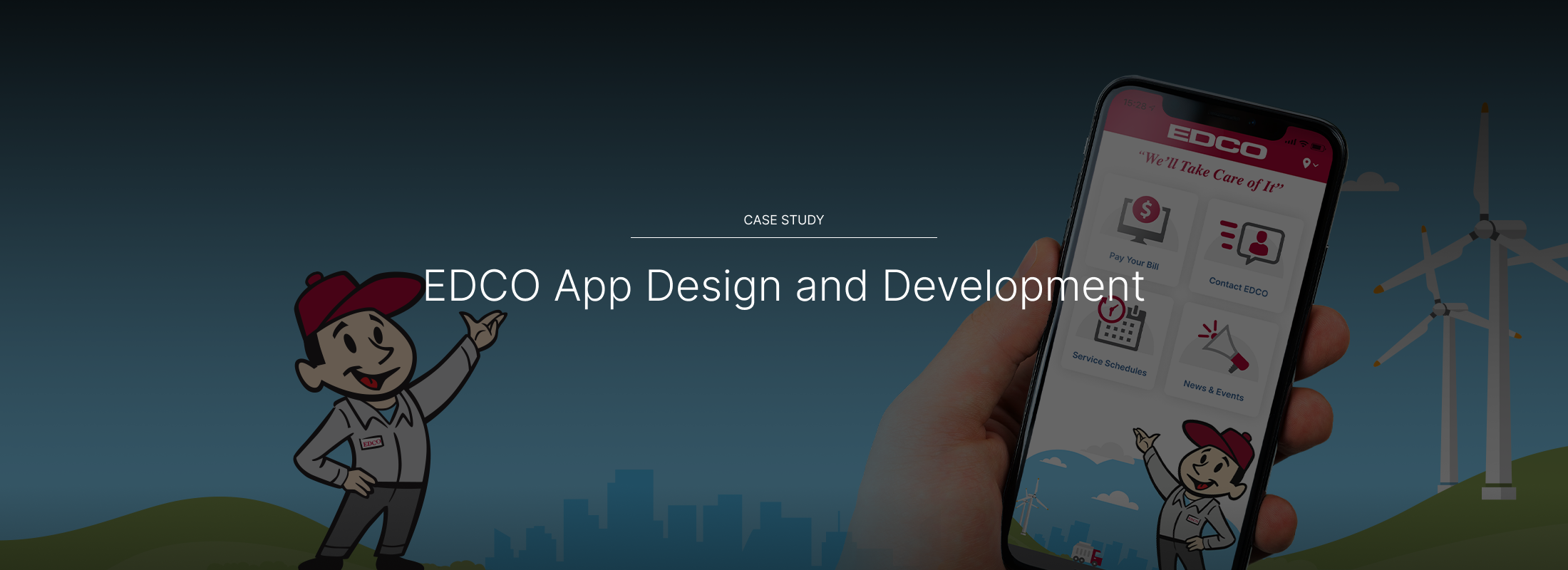Blog

5 Key Findings from a Recent Client Usability Study
Introduction
Good usability within a website means that the user is able to use the interface to complete her/his tasks quickly and successfully. It is noticeable when a user interface has poor usability, but users usually don’t recognize good usability as it is integrated seamlessly into her/his experience. However, it is not as easily built into a website. It takes conscious effort and user research to ensure that you design a website that provides a usable experience and addresses any issues or problems that a user might encounter.
A heuristic evaluation is a “quick and dirty” way to evaluate a website for usability issues. In this method, a usability expert evaluates the user interface against a set of usability heuristics, or broad principles, and identifies and prioritizes issues using a severity scale. While this is a low-cost and fast method of identifying usability problems, the research lacks the perspective of the user who will be actually interacting with the interface. This is where the usability study comes in. A usability study evaluates a website’s usability by having actual or representative users complete tasks on the current site or a working prototype. This method provides rich quantitative and qualitative data to ensure the website is designed to be easy to use and with the user’s feedback and satisfaction in mind.
Project Summary
A medical diagnostic company came to PINT for help on the redesign of their current website. One of the main goals of the redesign was to answer patient questions in a more streamlined fashion. We proposed conducting user research on the redesigned website to ensure that the new design addressed this goal.
The client created the initial website designs. In the UX research phase of the redesign, PINT first conducted a heuristic evaluation to identify any potential usability issues, as well as a sitemap evaluation. The client made the suggested usability improvements within the design and developed a clickable prototype for the usability study. PINT then developed a remote-moderated usability study, while the client found users that fit or resembled their patient demographic. We executed the study and translated the results into design recommendations for the final designs to integrate an optimal user experience into the redesign of the site.
Challenge
As the client’s goal for the redesign was to better support the patients coming to their site with questions, there was a need to ensure that the information on the website was readable and understandable to the users. The information presented on the website was medical and relating to a certain domain, therefore it was hard to judge the readability and understandability without talking with the users.
The patients of this diagnostic company are from an older age demographic, so they have a varying degree of technological ability. Typical UX patterns or best practices may not provide the best experience for this group of users. The client’s site has multiple purposes, from broad tasks of learning about their diagnostic tests to more specific tasks like figuring out how to contact the billing department about a bill. Again, this proved to be difficult to design and accommodate for without observing the users interacting with the website.
The final reason for conducting this usability study was the context and mindset that the patient user group would be in when interacting with the website. A user with a diagnosis looking for a test to determine their treatment plan may interact with the site differently than someone just casually browsing.
Heuristic Evaluation Results
As a precursor to the usability study, PINT conducted a modified version of a heuristic evaluation with only one reviewer. The purpose of this was to both identify any major usability issues that could be addressed before putting the prototype in front of users and to get familiar with the redesign to start planning for the usability study.
One major usability issue identified was the multiple navigation systems on the site: top navigation bar and a hamburger menu, both with different links. Another major usability issue identified was the organization, structure, and repetition of information on the site, specifically the insurance and test ordering information. PINT recommended separating out the insurance and ordering information to its own page, as well as some minor changes to the site map to create a logical flow that a user could easily understand and follow. Another recommendation was to implement a top navigation bar for the main site navigation to follow industry and usability best practices.
As these were known and major usability issues, these recommendations were implemented before the usability study so we could focus on gathering data relating to the users’ goals on the site.
Usability Study Results
The usability study was tested with 5 participants who were recruited through Reddit and convenience sampling. The study consisted of having the user complete four tasks on the prototype of the redesign and semi-structured interview questions. The following insights include both positive findings and opportunities for improvement, as well as the design recommendations that went along with each of the insights.
1. Overall, users found the redesigned website to be reliable and visually appealing.
Users often mentioned their affinity for the overall aesthetics of the website, specifying that the colors and design were crisp and clean. Because of this, users found the information on the site to be reliable and trustworthy. The overall visual design helped to validate the information on the site, therefore PINT did not recommend any major changes to the aesthetic of the site. Looking at the specific visual elements, one user commented that the homepage hero picture that showed an older couple smiling was “too happy” for content relating to the diagnostic tests. We recommended using a more neutral picture for the homepage hero to match the tone of the website.
2. Users easily and quickly located the contact information.
When asked to find information about how to contact the client’s billing department regarding a bill they received, all the users were able to locate a way to contact them. In any task where the users needed additional help or were confused, they independently sought out the client’s contact information and used that as a last resort to complete the task. Due to the validated findability of this information, PINT did not make any major design recommendations regarding the contact information or the “Contact Us” page.
3. Users were confused about the patients and physicians sides of the website.
The main navigation bar at the top of the website was divided up into “Physicians” and “Patients” and users expressed confusion about the two sides of the websites. During the task where the user was instructed to find more information about one of the client’s diagnostic tests, 4 out of the 5 users clicked on the “Learn More” call-to-action button on the homepage. This button took users to the information about the test, however it was on the Physician side of the site. However, users didn’t recognize that it was a page for physicians and could not understand the dense medical information on the page. Based on this information, the users could not clearly explain what the diagnostic test was for. One user thought the information was too medical or scientific to understand and would bounce from the site.
We recommended replacing the singular “Learn More” call-to-action button on the homepage with two different call-to-action buttons with more descriptive text differentiating between the Patients and the Physicians side. Another recommendation was to separate the two sides of the site into the client’s two diagnostic tests, rather than Patients and Physicians. Secondary categories were added to each of the main categories to differentiate the Patient and Physician pages.
4. Users did not find the diagnostic test report page to be helpful in interpreting the results of their test.
When users were given a scenario in which they were asked to interpret their diagnostic test report, all of the users were able to find the page with the test report explained. However, only 2 out of the 5 users interacted with the clickable elements that gave more information and context to the test results. Those 2 users did not find the content in the popups to be helpful in explaining and understanding their test results. Overall, users were confused and frustrated when interacting with this page, as these test results contained important information about the severity and risk of their diagnosis.
PINT identified usability issues in both the interactive elements on the page, as well as with the copy explaining the test result. We recommended displaying the information in a way that users could easily digest, whether that be a static, non-interactive page or a video explaining the results. The client decided to create a video of an explanation of the report and took out the sample report to encourage users to talk with their doctors and remove the burden of interpreting their results themselves.
5. Users had to scroll a lot to find their needed information, which decreased task efficiency and likelihood of completing a task.
In general, users mentioned that they had to scroll through a lot of information to find what they were looking for. This was observed throughout the study, but most noticeably in the task where users were asked to determine if Medicare covered the diagnostic test. Users had to scroll past three dense sections of information and graphics to get to the graphic about the coverage of Medicare.
Regarding the insurance and billing page, PINT recommended moving the commercial insurance and Medicare information up on the page above the financial assistance and billing process to make it more findable for users. We also recommended rewording some of its H2’s on the page to be more descriptive so users could easily scan the page and find the information they were looking for.
To address the issue of users having to scroll excessively, PINT recommended decreasing the amount of white space between sections of content throughout the site to help the users to find what they are looking for quickly and prevent frustration.
Results
All in all, the usability study provided insights to improve the usability of the client’s site far beyond what was identified in the heuristic evaluation. By putting the website in front of users, we identified integral changes to the sitemap, information architecture, content, and visual design of the website to improve the overall usability and user experience. This goes to show how important it is to interact with your users to design a site that is usable, and most importantly, is made for them.
Related Articles

ZOLL Data Systems Case Study
Project Summary In 2024, PINT and ZOLL Data Systems completed a project to redesign the ZOLL Data Systems website. The project originated from a desire...

EDCO App Design and Development
Introduction Remember back in 2007 when Steve Jobs told us that iPhones didn’t need a bunch of apps? No? You’re forgiven if it’s been lost...

N.A.M.I. San Diego App Development
Project Summary Since 2020, PINT has helped N.A.M.I. rearchitect and continuously improve its mobile applications oscER, oscER jr. and alfrEDU. The apps were initially rearchitected...